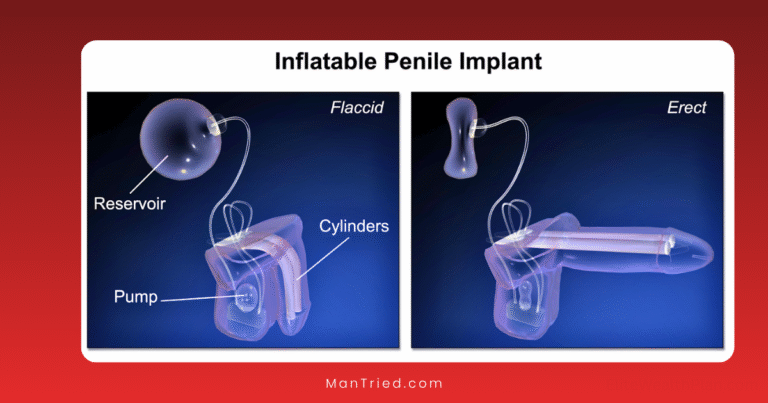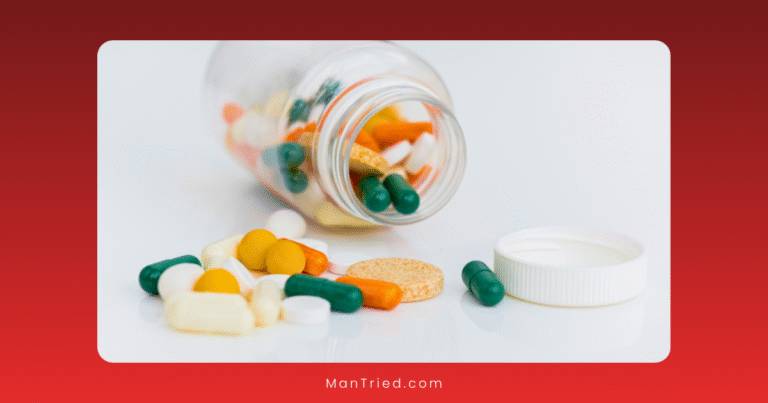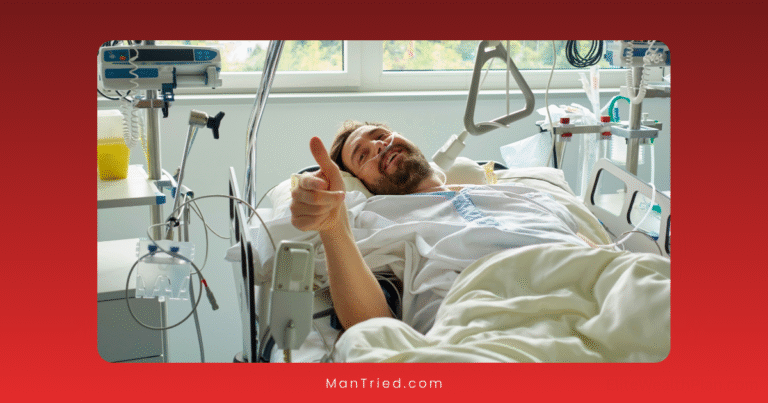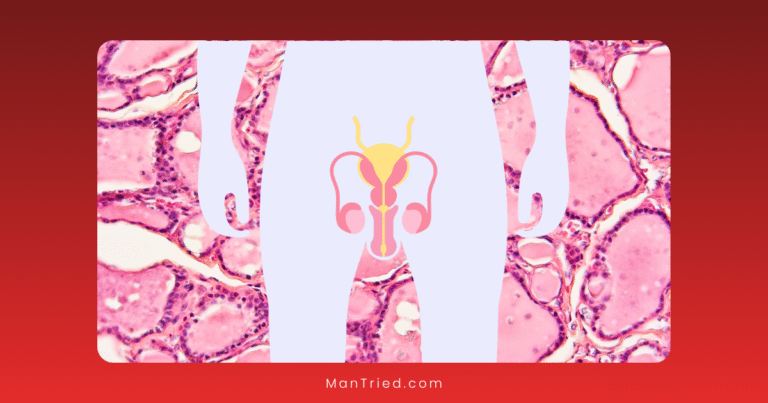Penile Enlargement Surgery: Realistic Expectations and Outcomes

Concerns about penile size are common among men of all ages, with studies indicating that up to 45% of men desire a larger penis despite having normal measurements. This concern has fueled a growing industry of surgical and non-surgical enhancement procedures. However, the reality of penile enlargement surgery—including its effectiveness, risks, and psychological outcomes—often differs from the marketing claims. This article provides an evidence-based overview of penile enlargement procedures, realistic expectations for outcomes, and important considerations for anyone contemplating these interventions.
Understanding Penile Enlargement Surgery
What Constitutes “Normal” Size?
Before discussing enlargement procedures, it’s important to understand what’s considered normal:
According to a comprehensive review published in BJU International that analyzed data from 17 studies with over 15,000 men:
- The average flaccid penis length is 9.16 cm (3.61 inches)
- The average stretched length is 13.24 cm (5.21 inches)
- The average erect length is 13.12 cm (5.17 inches)
- The average flaccid circumference is 9.31 cm (3.67 inches)
- The average erect circumference is 11.66 cm (4.59 inches)
“It’s crucial to understand that there’s significant variation in what’s considered ‘normal,'” explains Dr. James Wilson, urologist at Cleveland Clinic. “Many men who seek enlargement surgery actually fall within normal ranges but have misconceptions about average size.”
Medical vs. Cosmetic Indications
Penile enlargement procedures can be classified based on their indications:
Medical Indications
- Micropenis: A true micropenis is defined as a stretched penile length more than 2.5 standard deviations below the mean for age and race (typically less than 7.5 cm or 3 inches in adult males)
- Buried penis: A condition where the penis is partially or completely concealed beneath skin, fat, or scar tissue
- Penile trauma: Injury resulting in shortening or deformity
- Peyronie’s disease: A condition causing penile curvature and shortening
Cosmetic Indications
The vast majority of penile enlargement procedures are performed for cosmetic reasons in men with normal anatomy. According to the National Center for Biotechnology Information, many men seeking enlargement have what’s termed “penile dysmorphophobia” or “small penis anxiety” – a preoccupation with perceived inadequacy despite having normal measurements.
Types of Penile Enlargement Procedures
Several approaches exist for penile enlargement, targeting either length, girth, or both:
Length Enhancement Procedures
1. Suspensory Ligament Division (Ligamentolysis)
This procedure involves cutting the suspensory ligament that anchors the penis to the pubic bone.
Technique: Through a small incision above the penis, the surgeon divides the suspensory ligament, allowing more of the internal portion of the penis to extend outward.
Realistic Outcomes:
- Average gain: 1-3 cm (0.4-1.2 inches) in flaccid length
- Minimal to no increase in erect length
- Patient satisfaction rates: 30-65%
Potential Complications:
- Decreased angle of erection (penis may point downward)
- Penile instability during intercourse
- Reattachment of the ligament, negating results
- Scar formation
2. Sliding Elongation Technique
Used primarily for patients with Peyronie’s disease or penile shortening after prosthesis implantation.
Technique: The penis is partially disassembled and lengthened using grafts.
Realistic Outcomes:
- Average gain: 1.5-3.1 cm (0.6-1.2 inches)
- Higher complication rates than ligamentolysis
Potential Complications:
- Erectile dysfunction
- Decreased sensation
- Graft contracture
Girth Enhancement Procedures
1. Autologous Fat Transfer
Technique: Fat is harvested from the patient’s abdomen or thighs via liposuction and injected beneath the skin of the penis.
Realistic Outcomes:
- Initial circumference increase: 1.4-4.0 cm (0.55-1.57 inches)
- Long-term results: 30-70% of injected fat is typically reabsorbed within 6-12 months
- Potential need for multiple procedures to maintain results
Potential Complications:
- Uneven absorption leading to lumpy appearance
- Fat embolism (rare but serious)
- Asymmetry
- Need for repeat procedures
2. Dermal Fillers
Technique: Hyaluronic acid or other temporary fillers are injected beneath the penile skin.
Realistic Outcomes:
- Average increase in girth: 1.7-3.9 cm (0.67-1.54 inches)
- Duration: 9-18 months before reabsorption
- High initial satisfaction rates
Potential Complications:
- Nodule formation
- Migration of filler
- Infection
- Need for repeat treatments
3. Penuma® Silicone Implant
The only FDA-cleared implant specifically designed for cosmetic penile enhancement.
Technique: A crescent-shaped silicone sleeve is inserted beneath the penile skin through a small incision.
Realistic Outcomes:
- Average increase in girth: 56.7% according to a 2018 study published in the Journal of Sexual Medicine
- Permanent results unless removal is required
- 81% patient satisfaction rate in published studies
Potential Complications:
- Infection (3-5% of cases)
- Implant erosion or extrusion
- Seroma formation
- Need for removal (approximately 3-5% of patients)
4. Biostimulant Fillers
Technique: Materials that stimulate collagen production are injected beneath the penile skin.
Realistic Outcomes:
- Average increase in girth: 1.5-2.5 cm (0.6-1.0 inches)
- More permanent than hyaluronic acid fillers
- Results develop gradually over several months
Potential Complications:
- Granuloma formation
- Asymmetry
- Prolonged swelling
Realistic Expectations for Outcomes
Statistical Reality vs. Marketing Claims
According to Urology Specialists of Austin, it’s important to distinguish between marketing claims and evidence-based outcomes:
Length Enhancement
- Marketing claims: Gains of 1-3 inches
- Evidence-based reality: Average gains of 0.5-1.5 inches in flaccid state, minimal increase in erect length
- Long-term sustainability: High variability, with some patients experiencing regression
Girth Enhancement
- Marketing claims: Increases of 30-50%
- Evidence-based reality:
- Fat transfer: 20-30% increase initially, reducing to 10-15% after fat reabsorption
- Fillers: 15-30% increase, temporary unless using permanent fillers
- Penuma implant: Approximately 56.7% increase, more permanent
Patient Satisfaction Statistics
A critical consideration is patient satisfaction, which doesn’t always correlate with physical changes:
- Ligament division: 30-65% satisfaction rates
- Fat transfer: 30-70% satisfaction rates
- Dermal fillers: 65-90% initial satisfaction, declining over time
- Penuma implant: 81% satisfaction in published studies
Dr. Sarah Thompson, a plastic surgeon specializing in male aesthetic procedures, notes: “Patient satisfaction is often more closely tied to realistic pre-operative expectations than to the actual size increase achieved. Patients with unrealistic expectations tend to be dissatisfied regardless of the objective outcome.”
Psychological Considerations
Body Image and Penile Dysmorphophobia
According to a study published in the National Library of Medicine, psychological factors play a significant role in both the desire for and satisfaction with penile enlargement:
- 11% of men seeking penile enlargement meet criteria for body dysmorphic disorder (BDD)
- Many experience “small penis anxiety” despite having normal measurements
- Post-procedure psychological benefits often include increased self-confidence (47%) and increased sexual pleasure (42%)
- Interestingly, even after enlargement, many men still perceive their size as less than ideal
Screening and Counseling
The Cleveland Clinic recommends psychological screening and counseling before proceeding with enlargement surgery:
- Assessment for body dysmorphic disorder
- Discussion of realistic expectations
- Exploration of non-surgical alternatives
- Consideration of the impact of surgery on sexual function and relationships
“For some men, psychological counseling may be more appropriate than surgery,” explains Dr. Michael Roberts, a sexual health psychologist. “Understanding the root of size concerns and addressing body image issues can often resolve distress without the risks of surgical intervention.”
Recovery and Post-Operative Considerations
The recovery process varies significantly depending on the procedure:
Ligament Division
- Hospital stay: Typically outpatient
- Return to work: 3-7 days
- Physical activity restrictions: 2-4 weeks
- Sexual activity: Abstain for 4-6 weeks
- Post-operative care: May include traction devices to maximize results and prevent reattachment
Fat Transfer and Fillers
- Hospital stay: Outpatient
- Return to work: 1-3 days
- Physical activity: Resume light activity after 3-5 days
- Sexual activity: Abstain for 2-4 weeks
- Post-operative care: Massage may be recommended to maintain even distribution
Penuma Implant
- Hospital stay: Outpatient
- Return to work: 3-7 days for desk jobs
- Physical activity: No strenuous activity for 4-6 weeks
- Sexual activity: Abstain for 6-8 weeks
- Post-operative care: Antibiotics and wound care
According to Medical News Today, most procedures require approximately 30 days of limited physical activity and 60 days of sexual abstinence for optimal healing.
Alternatives to Surgery
For men concerned about penile size but hesitant about surgery, several non-surgical options exist:
Traction Devices
Penile traction devices apply gentle, sustained stretching to the penis.
- Evidence: Studies show average length increases of 1-3 cm after 3-6 months of consistent use
- Commitment: Requires wearing the device 4-9 hours daily for months
- Safety: Generally safe when used as directed
- Cost: $150-400, significantly less than surgical options
Vacuum Devices
While primarily designed for erectile dysfunction, vacuum devices may offer temporary size increases.
- Evidence: Limited data on long-term size changes
- Effectiveness: Temporary engorgement rather than permanent growth
- Safety: Generally safe when used properly
Weight Loss
For overweight men, weight loss can increase visible penile length by reducing the fat pad at the base of the penis.
- Evidence: Each 35 pounds of weight loss can reveal approximately 1 inch of previously hidden penile length
- Additional benefits: Improved cardiovascular health and potentially better erectile function
Cost Considerations
Penile enlargement procedures vary widely in cost:
- Ligament division: $4,000-8,000
- Fat transfer: $4,000-7,000
- Dermal fillers: $3,000-6,000 (may require repeat treatments)
- Penuma implant: $15,000-18,000
- Biostimulant fillers: $5,000-9,000
Insurance rarely covers these procedures unless they address a true medical condition like micropenis or buried penis.
Making an Informed Decision
For men considering penile enlargement surgery, the following steps are recommended:
- Accurate self-assessment: Measure properly and compare to average ranges
- Psychological evaluation: Consider whether concerns are physical or psychological
- Thorough research: Understand realistic outcomes and risks
- Consultation with specialists: Speak with multiple qualified urologists or plastic surgeons
- Consider alternatives: Explore non-surgical options first
- Realistic expectations: Understand the limitations of each procedure
Dr. Rafael Carrion, Professor of Urology at USF Health, advises: “The most important factor in satisfaction after penile enlargement procedures is having realistic expectations. I encourage patients to thoroughly research the procedures, understand the potential complications, and carefully consider whether the potential benefits outweigh the risks.”
Conclusion
Penile enlargement surgery can provide modest increases in size for appropriately selected patients. However, the reality often falls short of marketing claims, and all procedures carry significant risks. For many men with normal anatomy, the psychological benefits may not justify the physical risks and financial costs.
Men considering these procedures should seek consultation with qualified specialists, undergo appropriate psychological screening, and maintain realistic expectations about outcomes. For some, non-surgical alternatives or addressing underlying body image concerns may provide more satisfaction with fewer risks.






